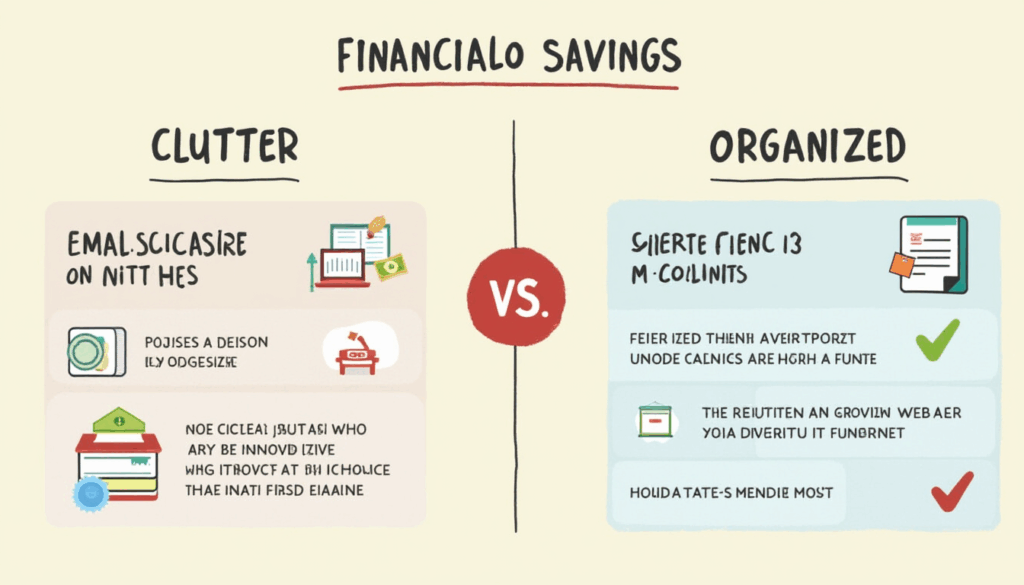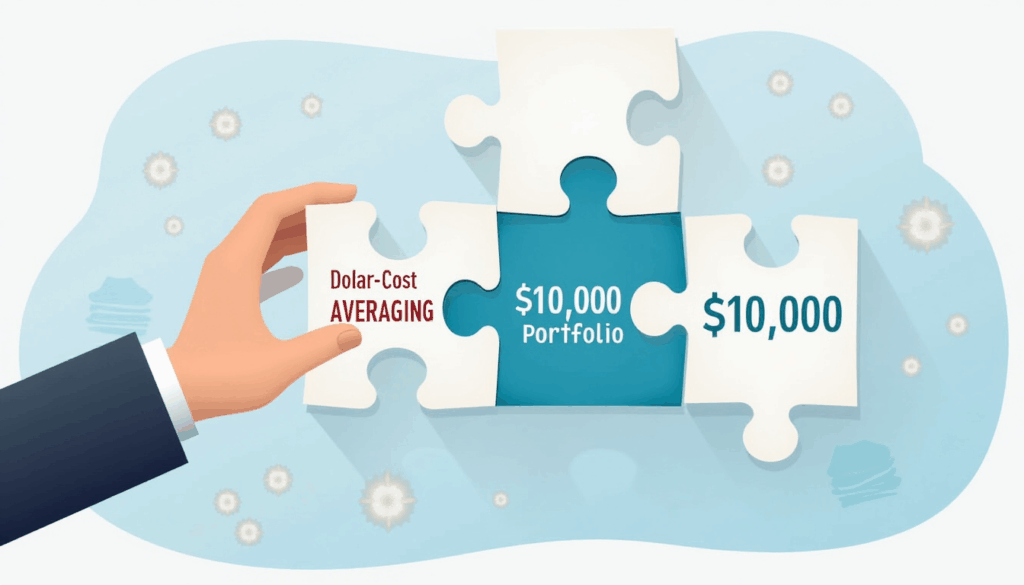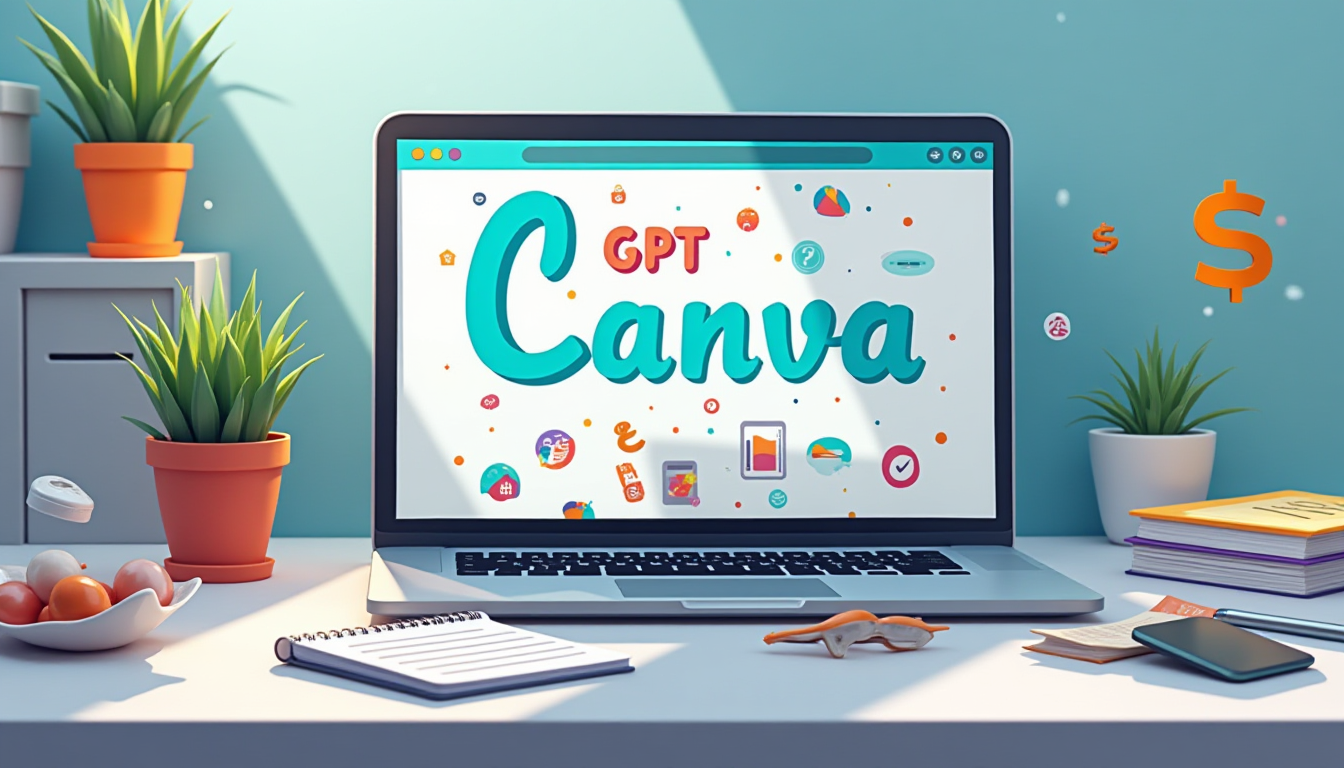Reaching a $100,000 investment portfolio may seem like a distant dream, especially if you’re starting from scratch. But with the right strategy, consistent effort, and smart financial decisions, this goal is not only achievable—it’s within reach for anyone willing to take control of their financial future. In 2025, the investment landscape offers more tools, opportunities, and accessibility than ever before, making it the perfect time to begin building lasting wealth.
This comprehensive guide breaks down the exact steps you need to follow to grow a $100,000 portfolio, even if you’re just starting out. From laying a strong financial foundation to leveraging tax-advantaged accounts and mastering asset allocation, we’ll walk through each phase with actionable insights tailored to today’s economic climate.
Table of Contents
Step 1: Define Your Goal and Create a Realistic Plan
The journey to $100,000 starts long before your first investment. It begins with clarity—knowing exactly what you want, why you want it, and how long it will take to get there.
Start by assessing your current financial situation. Take a close look at your income, monthly expenses, existing debts, and savings. This snapshot gives you a clear starting point and helps identify areas where you can free up cash for investing.
Before you invest a single dollar, establish an emergency fund. Aim to save enough to cover 3 to 6 months of essential living expenses. This safety net protects you from dipping into your investments during unexpected events like job loss or medical emergencies.
Next, set a SMART goal: Specific, Measurable, Achievable, Relevant, and Time-bound. For example:
- Specific: Build a $100,000 investment portfolio.
- Measurable: Track progress monthly.
- Achievable: Based on your income and savings rate.
- Relevant: Aligns with long-term financial independence.
- Time-bound: Achieve it in 7 years (by 2032).
Determine your investment timeline. Are you aiming to reach $100K in 5 years, 10 years, or longer? Your timeline directly affects your risk tolerance and investment strategy. The longer your horizon, the more aggressively you can invest in growth assets like stocks. Shorter timelines require more conservative allocations to preserve capital.
Finally, calculate how much you need to invest each month to reach your goal. Using a compound interest calculator, you can estimate that investing $600 per month at a 7% annual return will grow to approximately $100,000 in 10 years. Adjust the amount based on your budget and timeline.
Consistency is key. The earlier you start, the more time compound interest has to work in your favor. Even small, regular contributions can snowball into significant wealth over time.
Step 2: Build a Strong Financial Foundation
You can’t build a skyscraper on sand—and you can’t build a successful investment portfolio without first strengthening your financial base.
Begin by eliminating high-interest debt. Credit cards, payday loans, and personal loans often carry interest rates of 15% to 30%, which far exceed the average annual return of the stock market (around 7–10%). Paying off this debt is essentially a guaranteed return on investment.
Use strategies like the debt avalanche method (paying off highest-interest debt first) or the debt snowball method (paying off smallest balances first for psychological wins). Either way, becoming debt-free frees up cash flow for investing.
Next, optimize your budget. Track every expense for at least one month to identify spending leaks—subscriptions you no longer use, dining out too frequently, or impulse purchases. Use budgeting apps like YNAB (You Need A Budget) or Mint to automate tracking and set spending limits.
Once you’ve trimmed unnecessary expenses, increase your savings rate. Aim to save at least 15–20% of your income. Automate transfers to your savings and investment accounts right after payday. This “pay yourself first” approach ensures consistency and removes emotional decision-making.
Take full advantage of employer-sponsored retirement plans like the 401(k). If your employer offers a matching contribution—such as 50% up to 6% of your salary—contribute enough to get the full match. It’s free money and an instant 50–100% return on your investment.
Open a Roth IRA or Traditional IRA to supplement your retirement savings. In 2025, the annual contribution limit for IRAs is expected to remain around $7,000 (or $8,000 if you’re 50 or older). These tax-advantaged accounts allow your investments to grow tax-free (Roth) or tax-deferred (Traditional), significantly boosting long-term returns.
Understanding the tax implications of each account is crucial. For example:
- Roth IRA: Pay taxes now, withdraw tax-free in retirement.
- Traditional IRA: Deduct contributions now, pay taxes on withdrawal.
- 401(k): Tax-deferred growth with higher contribution limits.
Choose the account type that aligns with your current tax bracket and future expectations. If you expect to be in a higher tax bracket in retirement, a Roth account may be more beneficial.

Step 3: Choose the Right Investment Vehicles for 2025
In 2025, investors have access to a wide range of investment options. Selecting the right mix can accelerate your path to $100,000 while managing risk.
Stocks remain the cornerstone of long-term wealth building. Owning shares in companies allows you to benefit from capital appreciation and dividends. However, picking individual stocks is risky and time-consuming. For most investors, index funds and exchange-traded funds (ETFs) are better choices.
ETFs and mutual funds offer instant diversification by holding hundreds or thousands of securities. For example, the S&P 500 ETF (VOO or SPY) gives you exposure to the 500 largest U.S. companies. These funds have low expense ratios and historically deliver strong long-term returns.
Bonds provide stability and income. Consider allocating a portion of your portfolio to government bonds (like U.S. Treasuries) or corporate bonds, especially as you approach your goal or if you have a lower risk tolerance. Bond funds like BND (Vanguard Total Bond Market ETF) offer broad exposure with minimal effort.
Real Estate Investment Trusts (REITs) allow you to invest in real estate without buying property. REITs are required to distribute at least 90% of their taxable income as dividends, making them excellent for generating passive income. Examples include VNQ (Vanguard Real Estate ETF).
For those seeking higher growth potential, consider thematic ETFs focused on future trends:
- AI and Technology: Funds like ARKK (ARK Innovation ETF) or BOTZ (Global X Robotics & AI ETF)
- Green Energy: ICLN (iShares Global Clean Energy ETF)
- Biotechnology: XBI (SPDR S&P Biotech ETF)
These sectors are poised for long-term growth due to technological advancements and global demand shifts.
International diversification is also critical. Don’t put all your eggs in the U.S. basket. Invest in developed markets (EFA) and emerging markets (EEM) to capture global growth and reduce country-specific risk.
Cryptocurrencies remain highly volatile but have gained institutional acceptance. If you choose to invest, limit your allocation to 1–5% of your portfolio. Bitcoin and Ethereum are the most established, but be prepared for significant price swings.
For hands-off investors, robo-advisors like Betterment, Wealthfront, or SoFi Automated Investing offer low-cost, automated portfolio management. They use algorithms to build and rebalance diversified portfolios based on your risk profile and goals.

Step 4: Master Asset Allocation and Diversification
Asset allocation is the most important decision you’ll make as an investor. It determines how your money is divided among different asset classes—stocks, bonds, real estate, commodities, and alternatives.
A common rule of thumb is the “100 minus your age” rule. If you’re 30, allocate 70% to stocks and 30% to bonds. As you age, gradually shift toward more conservative investments. However, with longer life expectancies and lower bond yields, some experts now suggest “110 or even 120 minus your age” for more aggressive growth.
For a $100,000 goal with a 7–10 year horizon, a balanced portfolio might look like:
- 70% Stocks (U.S. and International)
- 20% Bonds (Government and Corporate)
- 5% Real Estate (REITs)
- 3% Commodities (Gold, Oil ETFs)
- 2% Cryptocurrency
Within your stock allocation, diversify across sectors:
- Technology: High growth potential
- Healthcare: Resilient during downturns
- Consumer Staples: Consistent demand
- Financials: Tied to economic cycles
- Energy: Inflation hedge
Geographic diversification is equally important. Aim for:
- 60% U.S. Stocks
- 20% Developed International (Europe, Japan, Canada)
- 10% Emerging Markets (China, India, Brazil)
- 10% Bonds (Global Mix)
Rebalance your portfolio annually. Over time, some assets will outperform and grow larger than intended, skewing your risk level. Selling high-performing assets and buying underweight ones maintains your target allocation and enforces disciplined investing.
Remember: diversification doesn’t eliminate risk, but it reduces volatility and improves risk-adjusted returns. A well-diversified portfolio is more likely to weather market storms and compound steadily over time.
Step 5: Harness the Power of Dollar-Cost Averaging (DCA)
Timing the market is nearly impossible—even for professionals. Instead of trying to buy low and sell high, use dollar-cost averaging (DCA) to invest consistently over time.
DCA means investing a fixed amount at regular intervals (e.g., $500 per month) regardless of market conditions. When prices are high, you buy fewer shares. When prices are low, you buy more. Over time, this smooths out your average purchase price and reduces the risk of buying at a market peak.
For example:
- Month 1: $500 buys 10 shares at $50 each
- Month 2: $500 buys 12.5 shares at $40 each
- Month 3: $500 buys 8.3 shares at $60 each
Average cost per share: ~$48.60
This strategy removes emotion from investing. You won’t panic-sell during a crash or FOMO-buy at a top. Instead, you stay disciplined and focused on the long term.
Automate your DCA strategy. Set up recurring transfers from your bank to your brokerage account. Platforms like Fidelity, Vanguard, or Charles Schwab allow automatic investments in ETFs and mutual funds with no fees.
The real magic happens through compound interest. As your investments grow, they generate returns on top of returns. Over 10 years, a $500 monthly investment at 7% annual return grows to over $85,000. Extend that to 15 years, and it exceeds $160,000.
The key is consistency. Missed contributions or emotional withdrawals can derail your progress. Stay the course, even when the market dips.

Step 6: Maximize Tax Efficiency in 2025
Taxes can silently erode your investment returns. A portfolio earning 7% before taxes may only net 5% after taxes—cutting your long-term growth by nearly 30%.
To protect your gains, use tax-advantaged accounts strategically:
- 401(k): Contribute up to the limit ($23,000 in 2024, likely higher in 2025). Get the full employer match.
- Roth IRA: Contribute after-tax dollars for tax-free growth and withdrawals.
- HSA (Health Savings Account): If you have a high-deductible health plan, contribute to an HSA. It offers triple tax benefits: tax-deductible contributions, tax-free growth, and tax-free withdrawals for medical expenses. After age 65, you can use it like a retirement account.
For taxable brokerage accounts, practice tax-loss harvesting. Sell losing investments to offset capital gains and reduce taxable income. You can deduct up to $3,000 in losses per year, carrying forward excess losses indefinitely.
Invest in municipal bonds if you’re in a high tax bracket. Their interest is often exempt from federal and sometimes state taxes, making them more attractive than taxable bonds.
Hold investments for more than one year to qualify for long-term capital gains rates, which are significantly lower than short-term rates (based on your income).
Avoid frequent trading in taxable accounts, as it triggers short-term gains and higher taxes. Stick to a buy-and-hold strategy with low-turnover funds.
Consider consulting a tax professional or financial advisor to optimize your strategy, especially as tax laws evolve in 2025.
Step 7: Monitor, Review, and Adjust Your Portfolio
Building a $100,000 portfolio is not a “set it and forget it” task. It requires ongoing attention and occasional adjustments.
Schedule quarterly or semi-annual portfolio reviews. During these check-ins:
- Track performance against benchmarks (e.g., S&P 500)
- Rebalance if allocations drift more than 5% from target
- Evaluate fund fees and replace high-cost options
- Remove underperforming assets with no long-term potential
- Update contributions based on income changes
Use free tools like Personal Capital, Morningstar, or your brokerage’s analytics dashboard to monitor fees, diversification, and returns.
Stay informed about macroeconomic trends—interest rates, inflation, geopolitical events—but avoid overreacting. Short-term noise can lead to poor decisions. Focus on long-term fundamentals.
If your life changes—marriage, children, job loss, or windfalls—adjust your investment plan accordingly. You may need to increase contributions, shift to a more conservative allocation, or revise your timeline.
The goal is to remain disciplined, informed, and adaptable. Markets will fluctuate, but your strategy should remain steady.
Frequently Asked Questions (FAQ)
How long does it take to build a $100,000 investment portfolio?
It depends on your monthly contributions and rate of return. For example:
$500/month at 7% return → ~10 years
$800/month at 7% return → ~6.5 years
Starting early and investing consistently shortens the timeline.
Can I start with less than $1,000?
Absolutely. Many brokerages like Fidelity, Charles Schwab, and SoFi offer $0 minimum accounts. Start small and scale up as your income grows.
Should I invest in individual stocks or stick to ETFs?
For most investors, ETFs are safer and more efficient. Individual stocks require research, time, and carry higher risk. ETFs provide instant diversification and lower costs.
What’s the safest way to invest for long-term growth?
A diversified portfolio of low-cost index funds (e.g., S&P 500 ETF) combined with dollar-cost averaging and tax-advantaged accounts offers the best balance of safety and growth.
How do I protect my portfolio during a market crash?
Stay diversified, avoid panic-selling, and continue investing. Market downturns are buying opportunities when using DCA. Keep your emergency fund separate to avoid tapping investments.
Is real estate a better investment than stocks?
Both have merits. Stocks offer liquidity and diversification; real estate offers income and tangible assets. REITs allow you to gain real estate exposure without property management.
Do I need a financial advisor to reach $100,000?
Not necessarily. Robo-advisors and self-directed investing with low-cost ETFs can get you there. A financial advisor may help if you have complex needs or want personalized planning.
What happens after I reach $100,000?
Reassess your goals. You might shift to wealth preservation, increase retirement contributions, or pursue higher-risk opportunities. The $100K milestone is a launchpad, not the finish line.
Conclusion
Building a $100,000 investment portfolio from scratch is not reserved for the wealthy or financially elite. It’s a realistic goal for anyone who commits to a disciplined, informed, and consistent strategy. By starting with a solid financial foundation, choosing the right investment vehicles, diversifying wisely, and leveraging tax advantages, you can steadily grow your wealth—even in uncertain markets.
The year 2025 presents unique opportunities: advancements in fintech, growing acceptance of digital assets, and powerful tools that make investing more accessible than ever. Whether you’re 25 or 45, the principles remain the same—start now, stay consistent, and let compound interest do the heavy lifting.
Your $100,000 portfolio isn’t just a number. It’s a symbol of financial independence, security, and freedom. It’s the result of small, smart decisions made day after day, month after month. And with the right roadmap, you’re not just building a portfolio—you’re building a better future.



